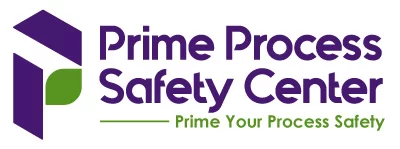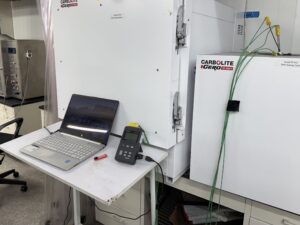We also offer
What Is Fault Tree Analysis (FTA)?
Fault Tree Analysis (FTA) is a structured, deductive method used to analyze the causes of system failures. It begins with a defined top event (like a system failure or safety incident) and works backwards to identify all contributing factors—both technical and human.
FTA is especially valuable in industries where complex systems interact and a single failure can result in serious safety, operational, or financial consequences. Using a tree-like visual structure, FTA maps out how combinations of events, connected by logical gates (“AND,” “OR”), can lead to the top-level failure.
Why Perform Fault Tree Analysis?
Performing FTA helps you:
-
Identify and understand complex failure pathways
-
Prevent costly system breakdowns and safety incidents
-
Uncover both human and technical contributing factors
-
Improve process reliability and safety performance
-
Meet regulatory compliance (e.g., OSHA, EPA, industry standards)
-
Support continuous improvement and smarter decision-making
FTA provides a visual and logical representation of system vulnerabilities, helping organizations develop effective mitigation strategies and avoid repeat failures.
Fault Tree Analysis (FTA): Step-by-Step Approach
-
Define the Top Event
Start by identifying the specific failure or undesirable event. -
Assemble a Multidisciplinary Team
Include engineers, operators, maintenance, and safety personnel. -
Construct the Fault Tree
Build a tree diagram that traces contributing events leading to the top event. -
Use Logical Gates
Apply “AND” and “OR” gates to show how multiple causes interact. -
Break Down Contributing Events
Analyze each branch to uncover basic causes—technical, human, or environmental. -
Gather Data
Use historical failure data, incident reports, and expert insights. -
Quantitative Analysis (if applicable)
Assign probabilities to failure modes to estimate the likelihood of the top event. -
Identify System Interdependencies
Understand how events in one area can impact other parts of the system. -
Review and Verify the Tree
Ensure the structure is accurate, complete, and validated by the team. -
Develop Risk Mitigation Strategies
Recommend targeted design or procedural changes to reduce failure risk. -
Document the Analysis
Maintain clear records of the FTA process and findings. -
Implement Solutions
Put mitigation plans into practice and track their effectiveness. -
Training and Communication
Train relevant personnel on key findings and procedural changes. -
Continual Improvement
Update the FTA as systems evolve and integrate learnings into future designs.
Why Choose Prime Process Safety Center
Partnering with Prime Process Safety Center for FTA gives you access to industry-leading expertise and a proven approach tailored to your operations.
Our Key Advantages:
-
Expert Knowledge
Skilled professionals with in-depth experience in Fault Tree Analysis and process safety. -
Tailored Solutions
We customize the FTA to your specific systems, risks, and operational needs. -
Comprehensive Analysis
We explore all possible causes and interdependencies—technical, human, and organizational. -
Advanced Tools
We use the latest methodologies and software to ensure precision and clarity. -
Risk Reduction
We don’t just identify risks—we provide actionable recommendations to fix them. -
Collaborative Process
We work closely with your team to integrate insights and solutions effectively. -
Compliance Support
We help ensure you meet safety standards and regulatory requirements. -
Training and Facilitation
We offer training and guidance to your staff, including Facilitation and Scribing Personnel to support thorough documentation and learning. -
Efficient and Timely Execution
Our streamlined process helps you implement improvements quickly and confidently. -
Ongoing Support
We’re here to help beyond the analysis—monitoring, updates, and continuous improvement.
FAQ
1. What is Fault Tree Analysis (FTA)?
FTA is a systematic, graphical approach used to deduce and analyze the causes of system failures, identifying the various contributing factors leading to a specific top event, usually an undesirable state or failure.
2. Why is FTA important in the process industry?
FTA is essential for identifying potential failure modes in complex systems, enhancing safety by proactively addressing risks, and improving system reliability and efficiency.
3. How is FTA conducted?
FTA involves creating a fault tree diagram that starts with a top event and uses logical symbols to trace back through various layers of causes and contributing factors to identify root causes.
4. What are "top events" in FTA?
Top events are the undesired states or failures at the top of the fault tree, from which the analysis traces back to find root causes.
5. Can FTA be used for any type of system failure?
Yes, FTA is versatile and can be applied to analyze a wide range of system failures, from mechanical breakdowns to safety and process incidents.
6. What is the difference between FTA and other analysis methods like RCA?
FTA is more focused on systematically breaking down and visualizing the pathways leading to a specific failure, while RCA typically involves a broader approach to finding root causes of a problem.
7. How detailed should a fault tree be?
The level of detail in a fault tree depends on the complexity of the system and the nature of the top event; it should be detailed enough to comprehensively identify all significant contributing factors.
8. Who should be involved in conducting FTA?
A multidisciplinary team with expertise in different aspects of the system, including engineering, operations, and safety personnel, should be involved for a thorough analysis.
9. What are the benefits of using FTA in the process industry?
FTA helps in proactively identifying potential failure points, supports decision-making in safety and design improvements, and aids in compliance with safety regulations.
10. Can FTA be integrated with other risk management tools?
Yes, FTA can be effectively integrated with other risk management tools like Risk Assessment, HAZOP, and FMEA for a more comprehensive approach to safety and reliability.














